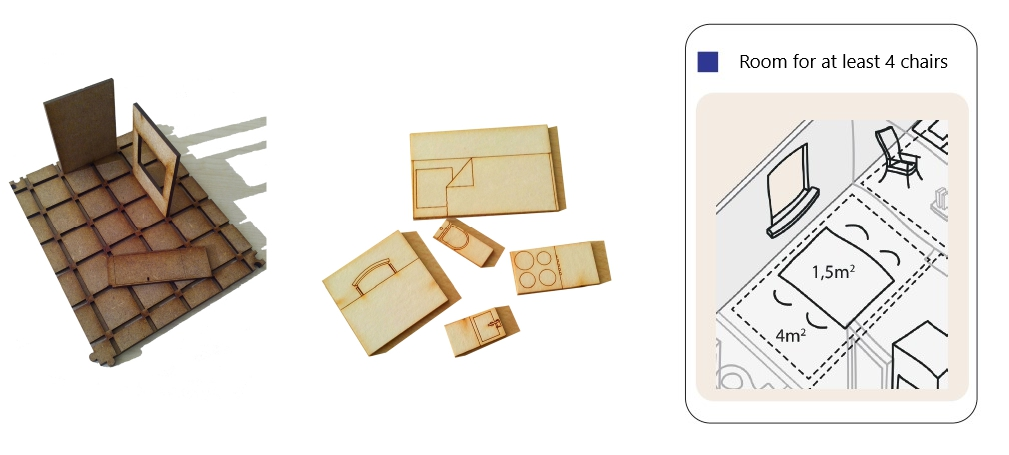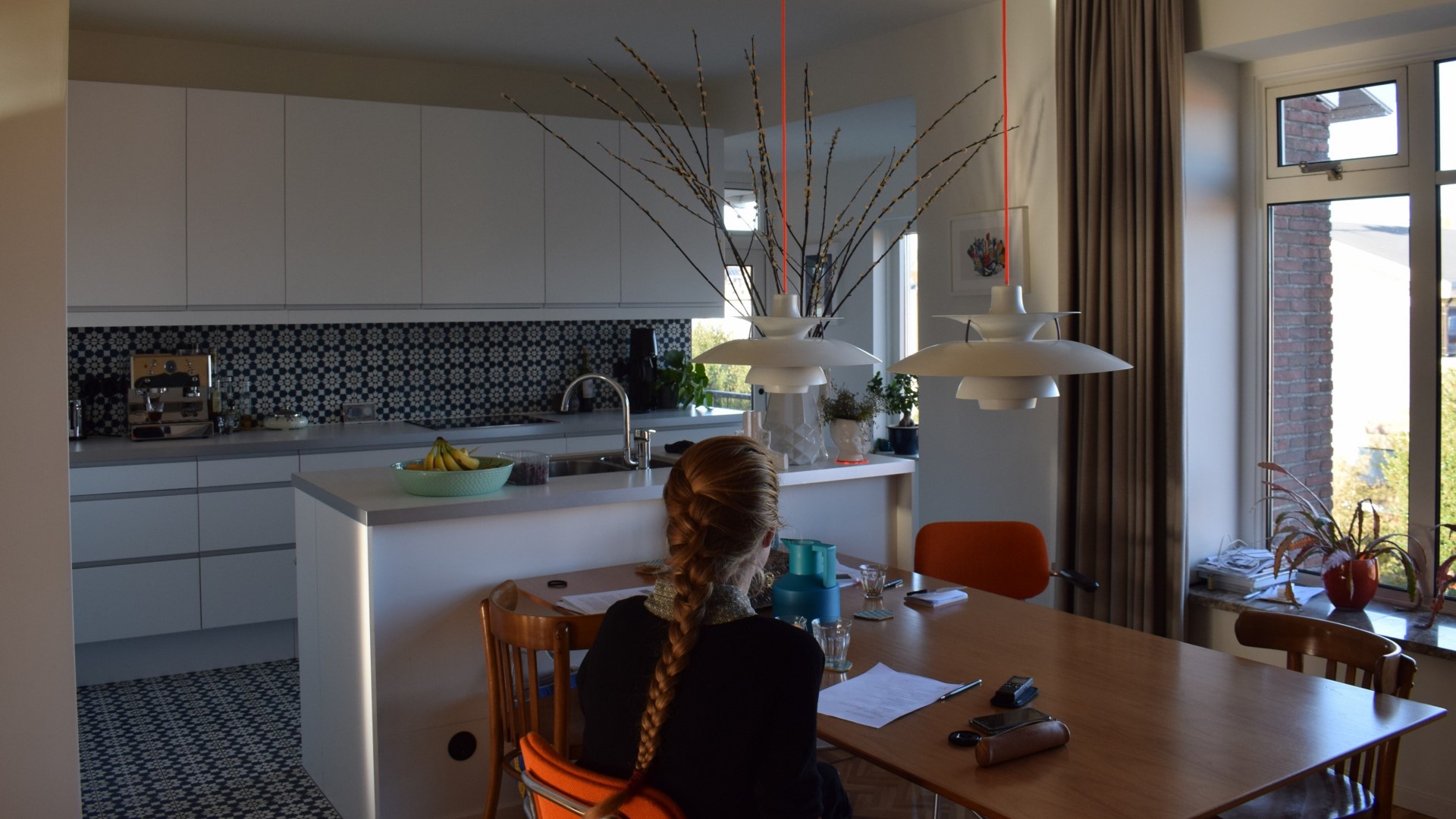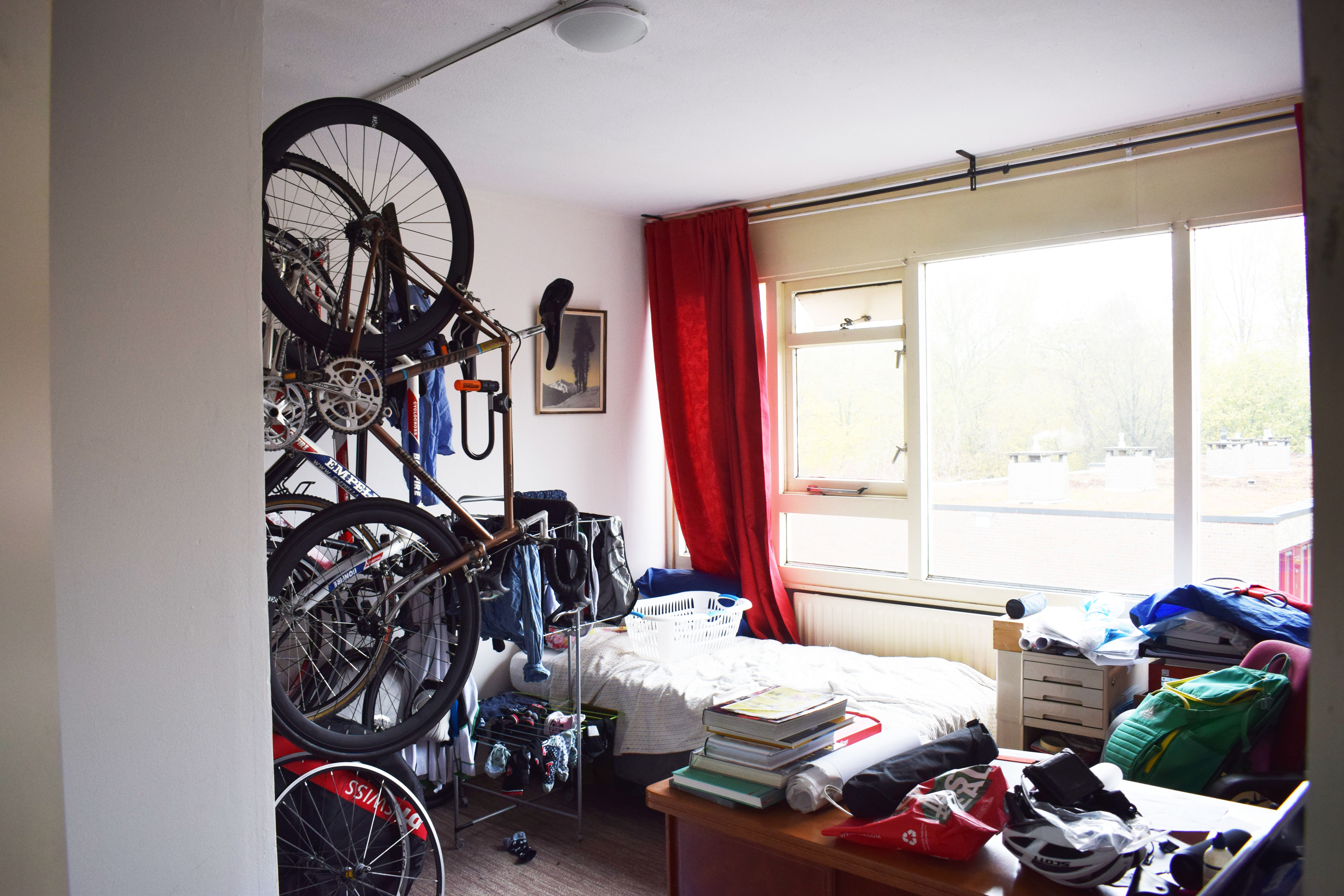One partial solution to the housing crisis is the temporary transformation of vacant buildings into housing. This process can provide relief for 'urgent seekers', such as people with residence permits, students, and first-time buyers. However, it also presents the challenge of turning these places into ‘homes’. What can designers and architects do to help? That question started Marjolein Overtoom's doctoral research. "As a student, I already combined architecture and psychology. This project perfectly matched my fascination with the link between design and behaviour."
"Most previous research on feeling at home studied the average needs of a target group." Marjolein was not content: “I wanted to gain insight into the variation within groups.” To that end, she visited recently transformed buildings and conducted surveys and interviews among peolpe with residence permits, students, and first-time buyers. "I was curious about the link between their activities and definition of home. For example: what difference does cooking alone versus cooking together make?"
How do you define ‘Home’?
The surveys and interviews pointed Marjolein to six meanings that residents attach, to varying degrees, to their ‘home’.
- Representation: home can feel like a reflection of its occupant. For example, Marjolein talked to a first-time buyer who was afraid to invite his family because his newly bought house resembled a student residence.
- Appropriation: some residents are very keen for a house to be ‘their own’, especially if their stay is relatively long. For example, they might pick a new colour for the walls.
- Privacy: a familiar concern for everyone. Marjolein: "During the interviews, I noticed that some people felt uncomfortable if their bed was visible to guests, because that is a private object. Also noise is often a major concern. Noise from the neighbours, but also from the resident themselves."
- Sociability: is it easy to spend time with others in your home? For some, cooking together is very important, in which case the kitchen should be big enough. Others prefer to hang out on the sofa... but in that case it has to fit in the house.
- Rootedness: to what extent is the home intertwined with the resident's past and present? Naturally the duration of residence is important, but also, for example, whether there is room for heirlooms.
- Future: the logical counterpart is the extent to which the home feels like part of one's future. The resident can express this by, for example, investing money and time in their home or local community.
“The conclusion is not that certain meanings are necessarily linked to certain groups,” Marjolein stresses. “Some first-time buyers deeply value Sociability, while others care more about Privacy or Appropriation. That is the point! We have to take variation into account, even within a single group.” Her research offers both a lens to highlight this variation and a language with which to discuss it. This way, architects and policymakers can work towards more suitable housing without the unrealistic requirement of asking every future resident about their preferences.

What do you do at ‘Home’?
Marjolein's conversations with residents pointed her to three types of activities through which they give meaning to their homes.
- Familiarising: for example, by painting the walls or displaying their personal items.
- Organising: for example, by assigning a place and time for belongings or activities.
- Managing: for example, by tidying up, opening the window, and offering coffee to visitors.
Marjolein was struck by residents expressing their need for ‘undetermined space’ within their homes. A flexible spot for necessities or hobbies, for example to dance or repair their bikes. "As a designer, you might offer such a spot by, for example, making the bed or dining table foldable, or ensuring that a desk or table can be moved. Not everyone will make use of it, but you can at least offer the opportunity."
To conclude, Marjolein learned an important lesson during her research. “We often stress the importance of imagining ourselves in someone else's situation. But in my experience, that approach is not always helpful. There may be very different concerns and priorities at play in the lives of students or people with residence permits than we would expect based on our own perspective. That is precisely why it is important to listen carefully and be open to the unexpected, such as that everyday actions like doing the dishes can be an important part of homeliness."
More information
Read Marjolein’s Open Access publication on the main elements and activities of young Dutch people in their temporary home.
Marjolein’s complete thesis can be found using this DOI link.




